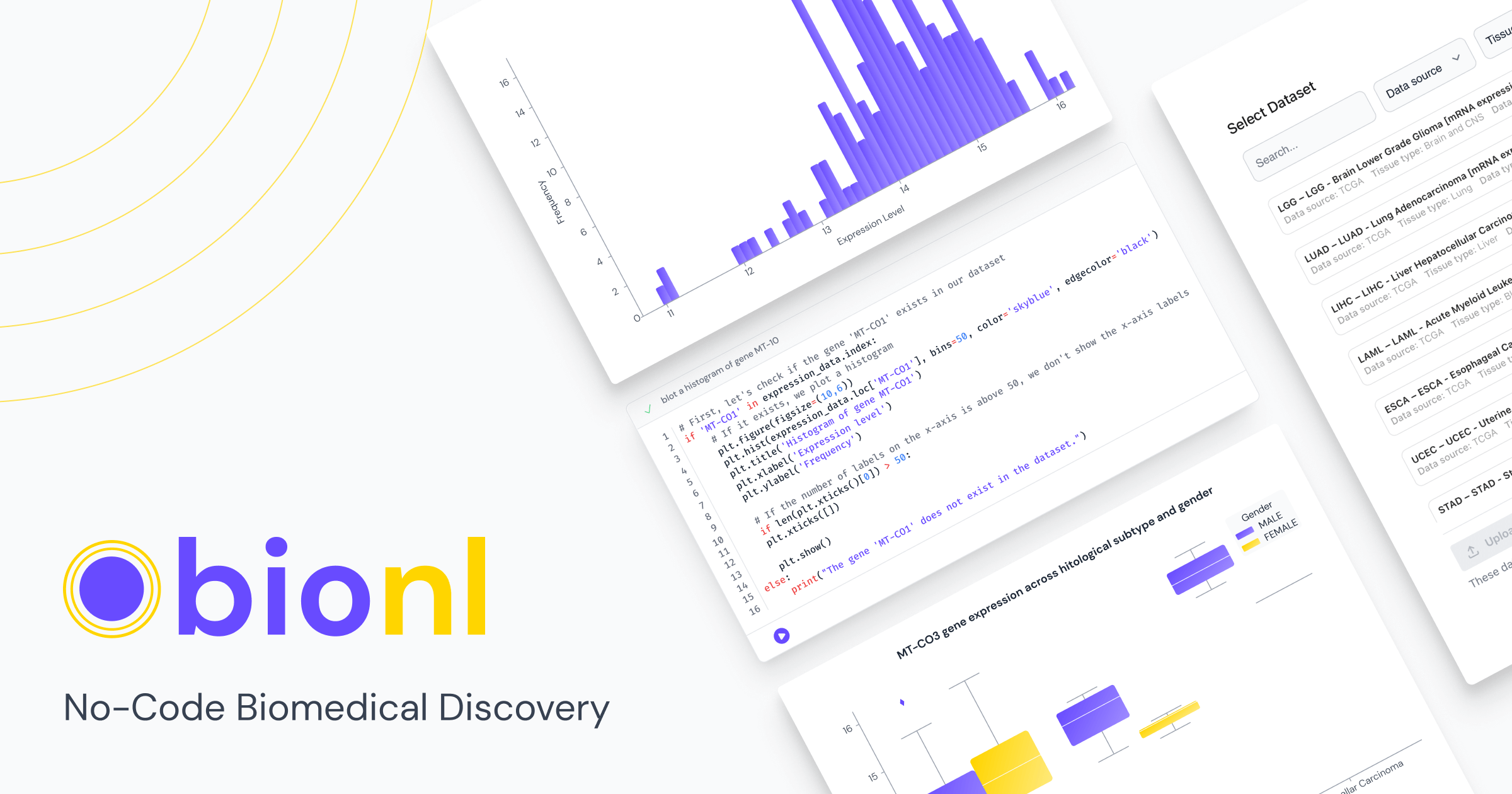Drug Delivery: The Synergy of RNA, AI, and Bioinformatics

RNA (Ribonucleic Acid) has evolved from its traditional role as a mere messenger molecule to a multifaceted actor in biology. It's not just about carrying DNA instructions to ribosomes anymore; RNA can regulate gene expression, modify proteins, and even catalyze chemical reactions. This expanded understanding has paved the way for groundbreaking drug delivery options, including RNA nanoparticles. In this intricate landscape, Artificial Intelligence (AI), bioinformatics, and transcriptomics are playing pivotal roles. Let's delve into how these technologies, including platforms like Bionl.ai, are shaping the future of drug delivery.
The Versatility of RNA in Drug Delivery
RNA's newfound versatility has led to innovative drug delivery mechanisms. For instance, RNA can be employed to deliver gene therapy to patients with genetic disorders or to create vaccines that are more effective and less reactogenic than their traditional counterparts.
One of the most promising avenues is the development of RNA nanoparticles. These are tiny vesicles containing RNA molecules designed to target specific cells or tissues. The implications are enormous: targeted drug delivery could minimize side effects while maximizing efficacy. Imagine delivering gene therapy directly to cancer cells or administering vaccines that act more swiftly and effectively.
UNSW show illustration on RNA nanoparticles through the following video.
AI and Bioinformatics: The Dynamic Duo
AI and bioinformatics are the backstage tech heroes in this narrative. They serve multiple functions:
- Identifying New Drug Targets: AI algorithms can sift through massive datasets to identify potential RNA targets for treating diseases.
- Designing Drug Delivery Systems: Bioinformatics tools can help design RNA nanoparticles with optimal shapes and sizes for targeted delivery.
- Predicting Efficacy and Safety: AI can simulate how new RNA-based therapies might behave in the human body, providing early insights into their safety and effectiveness.
- Analyzing Clinical Trial Data: Bioinformatics can process and analyze the large datasets generated during clinical trials, speeding up the time-to-market for new therapies.
The Role of Transcriptomics
Transcriptomics, the study of RNA sequences in a cell, is another layer of complexity in this multi-disciplinary approach. It provides a more detailed view of cell behavior, allowing for even more precise drug targeting. By understanding the transcriptome of specific cells, researchers can design RNA nanoparticles that are incredibly accurate in their delivery mechanisms.
How Bionl.ai Fits In
Bionl.ai offers a state-of-the-art platform that integrates AI, bioinformatics, and transcriptomics to provide a comprehensive solution for biomedical research. Here are some features that make Bionl.ai indispensable in this field:
- Data Analysis: Bionl.ai's GenAI models can analyze large datasets, including transcriptomics data, to identify new RNA targets or to optimize existing ones.
- Visualization: The platform offers advanced data visualization tools, making it easier for researchers to interpret complex data and make informed decisions.
- Literature Review: Bionl.ai's AI-driven literature review can help researchers stay up-to-date with the latest advancements in RNA research, AI, and bioinformatics.
- Compliance: With a focus on healthcare, Bionl.ai is working towards achieving HIPAA, GDPR, and ISO27001 compliance, ensuring data integrity and security.
The Future Landscape
The synergy of RNA, AI, bioinformatics, and transcriptomics is setting the stage for a revolution in drug delivery systems. From MIT to Stanford and companies like Moderna, the application of these technologies is varied and far-reaching. As these technologies continue to evolve, the future of drug delivery looks not just promising but transformative.
Conclusion
The integration of RNA with AI, bioinformatics, and transcriptomics is more than the sum of its parts. It's a paradigm shift in how we approach drug delivery and disease treatment. Platforms like Bionl.ai are at the forefront of this revolution, offering tools that are not just cutting-edge but also tailored for the complexities of biomedical research.
By embracing these technologies, we are not just stepping into the future of drug delivery; we are sprinting towards a new era of medical science!
This blog was co-authored with ChatGPT.



